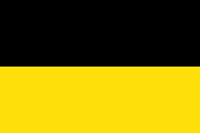World War I (1914-1918)

Kosovo Offensive
The Kosovo Offensive Operation, the third major battle in history to have been fought there, was a battle occurred between 10 November 1915 and 4 December 1915. Serbian defeat in this battle led to the costly Serbian retreat through Albania.
Battle and Serbian defeat
The battle began with the forcing of the South Morava by the Bulgarian 1st Army and ended with the total defeat of the Serbian army. The main blow was made by the 1st Army at the direction Niš-Pristina. For 2 days, the Serbian army seized Prokuplje, where they mounted a short-lived resistance.
The greatly outnumbered Serbian army retreated, then made a futile stand near the city of Gnjilane. The Serbs then tried a desperate counter-attack towards Vranje and Kumanovo to join the Anglo-French troops but were again defeated. The 6th and 9th Infantry Divisions of 1st Army easily took Pristina on 24 November. Then the whole of the Bulgarian army advanced, supported from the north by parts of 11th German Army and the Austro-Hungarian Austria-Hungary, often referred to as the Austro-Hungarian Empire, the Dual Monarchy, or Austria, was a constitutional monarchy and great power in Central Europe between 1867 and 1918. Austria-Hungary was one of the Central Powers in World War I, which began with an Austro-Hungarian war declaration on the Kingdom of Serbia on 28 July 1914. 3rd Army. The battle ended on 4 December when Debar was captured. The Serbs lost 30,000 soldiers, 199 guns, 150 cars and vast quantity of other military equipment. The Serbian army subsequently retreated into Albania, eventually being transported to the Greek island of Corfu.
Austria-Hungary, often referred to as the Austro-Hungarian Empire, the Dual Monarchy, or Austria, was a constitutional monarchy and great power in Central Europe between 1867 and 1918. Austria-Hungary was one of the Central Powers in World War I, which began with an Austro-Hungarian war declaration on the Kingdom of Serbia on 28 July 1914. 3rd Army. The battle ended on 4 December when Debar was captured. The Serbs lost 30,000 soldiers, 199 guns, 150 cars and vast quantity of other military equipment. The Serbian army subsequently retreated into Albania, eventually being transported to the Greek island of Corfu.
HISTORY

RESOURCES
This article uses material from the Wikipedia articles "World War", "World War I", and "Kosovo Offensive", which is released under the Creative Commons Attribution-Share-Alike License 3.0.
© Stories Preschool. All Rights Reserved.










